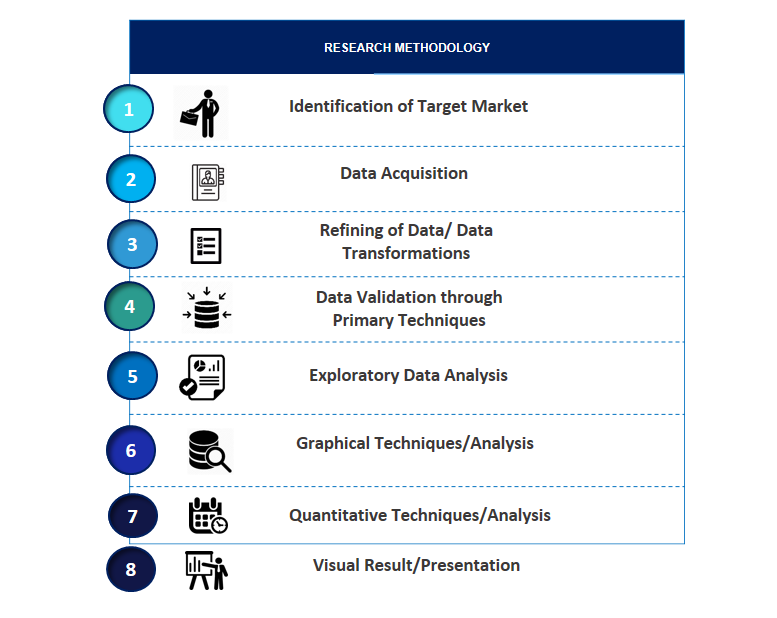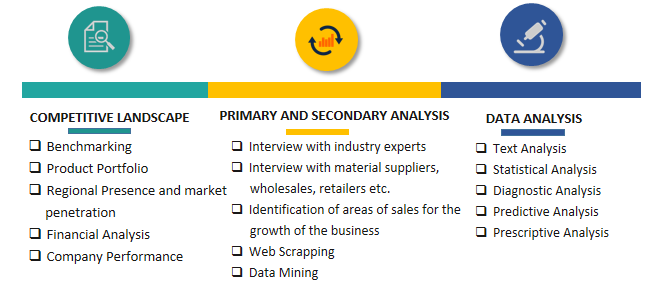Japan Electric Car Market Introduction and Overview
According to SPER Market Research, the Japan Electric Car Market is estimated to reach USD 177.89 billion by 2033 with a CAGR of 17.13%.
The report includes an in-depth analysis of the Japan Electric Car Market, including market size and trends, product mix, distribution channels, and supplier analysis. Electric vehicles, sometimes referred to as electric cars or EVs, are vehicles that run on electricity as opposed to traditional fossil fuels like gasoline or diesel. They make use of one or more rechargeable battery-powered electric motors. The car's motor(s) are powered by the electricity stored in these batteries, which allows the vehicle to drive ahead. The environmental friendliness of electric cars is one of their main benefits. When operating, electric cars (EVs) emit no tailpipe emissions, which lowers air pollution and greenhouse gas emissions that are linked to climate change
Market Opportunities and Challenges
Opportunities: A multitude of companies are creating and launching new goods in an effort to increase the number of electric vehicles sold in the nation. With a battery capacity of 71.4 kWh and 201 horsepower, Toyota unveiled their brand-new electric SUV, the Bz4x, in May 2022 in Japan. The car also features state-of-the-art ADAS safety features. The arrival of these new models is expected to boost demand for SUVs in the Japanese car market throughout the projected period. Because of government assistance in the form of subsidies and incentives, the nation's demand for electric vehicles is rising. Declared in December 2020, the government would triple the subsidies and incentives for purchasing electric vehicles.
Challenges: Advancement in the market would be restricted by rising manufacturing and battery costs. Although they cost more than fossil fuel-powered cars, electric vehicles (EVs) are superior. These cars have not yet achieved economies of scale since they are not being produced in large quantities. The absence of infrastructure for EV charging is another factor impeding the market's growth. Further impeding the market's expansion is the producers' demand for substantial resources and expenditure. But in the upcoming years, it's anticipated that battery prices would drop due to increased production of electric vehicle batteries and technological developments.
Market Competitive Landscape
The top five companies hold a major share of the fairly concentrated Japanese electric car market. Daihatsu Motor Co., Ltd., Honda Motor Company, Ltd., Mitsubishi Fuso Truck and Bus Corporation, Nissan Motor Co., Ltd., and Toyota Motor Corporation are the leading companies in this market.
Scope of the Report:
| Report Metric | Details |
| Market size available for years | 2020-2033 |
| Base year considered | 2023 |
| Forecast period | 2024-2033 |
| Segments covered | By Body Type, By Fuel Type
|
| Regions covered | Eastern, Western, Northern, Southern
|
| Companies Covered | BMW AG, Daihatsu Motor Co., Ltd., General Motors Company, Hino Motors, Ltd., Honda Motor Company, Ltd., Isuzu Motors Ltd., Mazda Motor Corporation, Mitsubishi Fuso Truck and Bus Corporation, Mitsubishi Motors Corporation, Nissan Motor Co., Ltd., Suzuki Motor Corporation, Tesla Inc.
|
COVID-19 Impact on Japan Electric Car Market
The Japanese market for electric cars has been significantly impacted by the COVID-19 outbreak. Lockdowns and other measures put in place to stop the virus's spread caused supply chain and production disruptions in Japan, as they did in many other nations. Due to these delays, there were effects on both local and import electric vehicle production and delivery. Additionally, the pandemic's effects on the economy have changed how consumers behave when making purchases. Sales of electric cars have slowed as a result of many prospective customers become increasingly hesitant to make large commitments, such as buying new cars.
Key Target Audience:
- Consumer Demographics
- Environmental Advocates
- Urban Dwellers
- Technology Enthusiasts
- Government Entities
- Fleet Operators
- Energy Sector Players
Our in-depth analysis of the Japan Electric Car Market includes the following segments:
|
By Body Type: |
Passenger Cars
Hatchback
Multi-purpose Vehicle
Sedan
Sports Utility Vehicle
|
|
By Fuel Type: |
BEV
FCEV
HEV
PHEV
|
|
By Region: |
Eastern
Western
Northern
Southern
|
Key Topics Covered in the Report:
- Japan Electric Car Market Size (FY’2024-FY’2033)
- Overview of Japan Electric Car Market
- Segmentation of Japan Electric Car Market By Body Type (Passenger Cars, Hatchback, Multi-purpose Vehicle, Sedan, Sports Utility Vehicle)
- Segmentation of Japan Electric Car Market By Fuel Type (BEV, FCEV, HEV, PHEV)
- Problems and Obstacles in Japan Electric Car Market
- Competitive Landscape in the Japan Electric Car Market
- Impact of COVID-19 and Demonetization on Japan Electric Car Market
- Details on Current Investment in Japan Electric Car Market
- Competitive Analysis of Japan Electric Car Market
- Prominent Players in the Japan Electric Car Market
- SWOT Analysis of Japan Electric Car Market
- Japan Electric Car Market Future Outlook and Projections (FY’2024-FY’2033)
- Recommendations from Analyst
1. Introduction
1.1. Scope of the report
1.2. Market segment analysis
2. Research Methodology
2.1. Research data source
2.1.1. Secondary Data
2.1.2. Primary Data
2.1.3. SPER’s internal database
2.1.4. Premium insight from KOL’s
2.2. Market size estimation
2.2.1. Top-down and Bottom-up approach
2.3. Data triangulation
3. Executive Summary
4. Market Dynamics
4.1. Driver, Restraint, Opportunity and Challenges analysis
4.1.1. Drivers
4.1.2. Restraints
4.1.3. Opportunities
4.1.4. Challenges
4.2. COVID-19 Impacts of the Japan Electric Car Market
5. Market variable and outlook
5.1. SWOT Analysis
5.1.1. Strengths
5.1.2. Weaknesses
5.1.3. Opportunities
5.1.4. Threats
5.2. PESTEL Analysis
5.2.1. Political Landscape
5.2.2. Economic Landscape
5.2.3. Social Landscape
5.2.4. Technological Landscape
5.2.5. Environmental Landscape
5.2.6. Legal Landscape
5.3. PORTER’s Five Forces
5.3.1. Bargaining power of suppliers
5.3.2. Bargaining power of buyers
5.3.3. Threat of Substitute
5.3.4. Threat of new entrant
5.3.5. Competitive rivalry
5.4. Heat Map Analysis
6. Competitive Landscape
6.1. Japan Electric Car Market Manufacturing Base Distribution, Sales Area, Product Type
6.2. Mergers & Acquisitions, Partnerships, Product Launch, and Collaboration in Japan Electric Car Market
7. Japan Electric Car Market, By Body Type (USD Million)
7.1. Japan Electric Car Market Value Share and Forecast, By Body Type, 2024-2033
7.2. Passenger Cars
7.2.1. Hatchback
7.2.2. Multi-purpose Vehicle
7.2.3. Sedan
7.2.4. Sports Utility Vehicle
8. Japan Electric Car Market, By Fuel Type (USD Million)
8.1. Japan Electric Car Market Value Share and Forecast, By Fuel Type, 2024-2033
8.2. BEV
8.3. FCEV
8.4. HEV
8.5. PHEV
9. Japan Electric Car Market Forecast, 2020-2033 (USD Million)
9.1. Japan Electric Car Market Size and Market Share
10. Japan Electric Car Market, By Body Type, 2020-2033 (USD Million)
10.1. Japan Electric Car Market Size and Market Share By Body Type (2020-2026)
10.2. Japan Electric Car Market Size and Market Share By Body Type (2027-2033)
11. Japan Electric Car Market, By Fuel Type, 2020-2033 (USD Million)
11.1. Japan Electric Car Market Size and Market Share By Fuel Type (2020-2026)
11.2. Japan Electric Car Market Size and Market Share By Fuel Type (2027-2033)
12. Japan Electric Car Market, By Region, 2020-2033 (USD Million)
12.1. Japan Electric Car Market Size and Market Share By Region (2020-2026)
12.2. Japan Electric Car Market Size and Market Share By Region (2027-2033)
12.3. Eastern
12.4. Western
12.5. Northern
12.6. Southern
13. Company Profile
13.1. BMW AG
13.1.1. Company details
13.1.2. Financial outlook
13.1.3. Product summary
13.1.4. Recent developments
13.2. Daihatsu Motor Co., Ltd.
13.2.1. Company details
13.2.2. Financial outlook
13.2.3. Product summary
13.2.4. Recent developments
13.3. General Motors Company
13.3.1. Company details
13.3.2. Financial outlook
13.3.3. Product summary
13.3.4. Recent developments
13.4. Hino Motors, Ltd.
13.4.1. Company details
13.4.2. Financial outlook
13.4.3. Product summary
13.4.4. Recent developments
13.5. Honda Motor Company, Ltd.
13.5.1. Company details
13.5.2. Financial outlook
13.5.3. Product summary
13.5.4. Recent developments
13.6. Isuzu Motors Ltd.
13.6.1. Company details
13.6.2. Financial outlook
13.6.3. Product summary
13.6.4. Recent developments
13.7. Mazda Motor Corporation
13.7.1. Company details
13.7.2. Financial outlook
13.7.3. Product summary
13.7.4. Recent developments
13.8. Mitsubishi Fuso Truck and Bus Corporation
13.8.1. Company details
13.8.2. Financial outlook
13.8.3. Product summary
13.8.4. Recent developments
13.9. Mitsubishi Motors Corporation
13.9.1. Company details
13.9.2. Financial outlook
13.9.3. Product summary
13.9.4. Recent developments
13.10. Nissan Motor Co., Ltd.
13.10.1. Company details
13.10.2. Financial outlook
13.10.3. Product summary
13.10.4. Recent developments
13.11. Suzuki Motor Corporation
13.11.1. Company details
13.11.2. Financial outlook
13.11.3. Product summary
13.12. Tesla Inc.
13.12.1. Company details
13.12.2. Financial outlook
13.12.3. Product summary
13.12.4. Recent developments
13.13. Toyota Motor Corporation
13.13.1. Company details
13.13.2. Financial outlook
13.13.3. Product summary
13.13.4. Recent developments
13.14. Volkswagen AG
13.14.1. Company details
13.14.2. Financial outlook
13.14.3. Product summary
13.14.4. Recent developments
13.15. Others
14. List of Abbreviations
15. Reference Links
16. Conclusion
17. Research Scope
SPER Market Research’s methodology uses great emphasis on primary research to ensure that the market intelligence insights are up to date, reliable and accurate. Primary interviews are done with players involved in each phase of a supply chain to analyze the market forecasting. The secondary research method is used to help you fully understand how the future markets and the spending patterns look likes.
The report is based on in-depth qualitative and quantitative analysis of the Product Market. The quantitative analysis involves the application of various projection and sampling techniques. The qualitative analysis involves primary interviews, surveys, and vendor briefings. The data gathered as a result of these processes are validated through experts opinion. Our research methodology entails an ideal mixture of primary and secondary initiatives.


